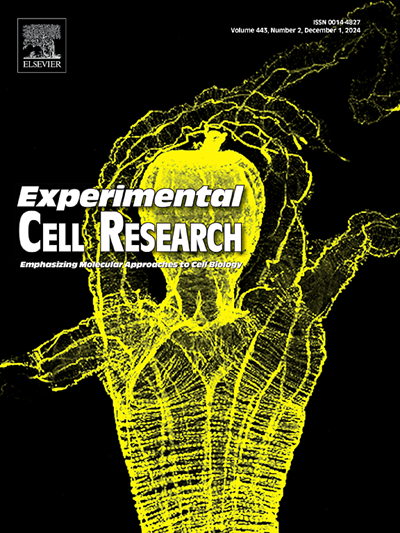URB597 downregulates DJ-1 expression in the mouse striatum and induces neurodegeneration
IF 3.3
3区 生物学
Q3 CELL BIOLOGY
引用次数: 0
Abstract
DJ-1 is a multifunctional protein involved in diverse cellular processes, including defense against oxidative stress, regulation of gene transcription, and maintenance of mitochondrial function. Mutations in the DJ-1 gene are closely associated with early-onset Parkinson's disease, and loss of DJ-1 function increases the susceptibility of dopaminergic neurons to oxidative damage, potentially driving neurodegeneration. Therefore, DJ-1 represents an attractive therapeutic target for PD. In this study, we screened a library of blood-brain barrier-permeable small molecules to identify compounds that modulate DJ-1 expression in the mouse brain. Through molecular docking, we discovered that URB597, a selective fatty acid amide hydrolase inhibitor, binds to DJ-1 and forms a stable complex. URB597 treatment markedly reduced DJ-1 protein levels in SH-SY5Y cells, leading to decreased cell survival and impaired mitochondrial function under oxidative stress conditions. In addition, URB597-treated mice exhibited motor deficits and dopaminergic neuron loss, indicating that suppressing DJ-1 expression may adversely affect neuronal function. Gene expression and pathway enrichment analyses revealed that URB597 targets DJ-1 in the mouse striatum and regulates the expression of genes involved in protein acetylation. Collectively, these findings underscore the critical role of DJ-1 in protecting dopaminergic neurons from oxidative damage and uncover its potential implications in regulating protein acetylation.
URB597下调小鼠纹状体中DJ-1的表达,诱导神经退行性变
DJ-1是一种多功能蛋白,参与多种细胞过程,包括防御氧化应激,调节基因转录和维持线粒体功能。DJ-1基因的突变与早发性帕金森病密切相关,DJ-1功能的丧失增加了多巴胺能神经元对氧化损伤的易感性,可能导致神经变性。因此,DJ-1是PD的一个有吸引力的治疗靶点。在这项研究中,我们筛选了一个血脑屏障可渗透的小分子库,以鉴定调节DJ-1在小鼠大脑中的表达的化合物。通过分子对接,我们发现选择性脂肪酸酰胺水解酶抑制剂URB597与DJ-1结合形成稳定的络合物。URB597处理显著降低SH-SY5Y细胞中DJ-1蛋白水平,导致氧化应激条件下细胞存活率下降,线粒体功能受损。此外,urb597处理小鼠表现出运动障碍和多巴胺能神经元丢失,表明抑制DJ-1表达可能对神经元功能产生不利影响。基因表达和通路富集分析显示,URB597在小鼠纹状体中靶向DJ-1,调控蛋白乙酰化相关基因的表达。总的来说,这些发现强调了DJ-1在保护多巴胺能神经元免受氧化损伤中的关键作用,并揭示了其在调节蛋白质乙酰化中的潜在意义。
本文章由计算机程序翻译,如有差异,请以英文原文为准。
求助全文
约1分钟内获得全文
求助全文
来源期刊

Experimental cell research
医学-细胞生物学
CiteScore
7.20
自引率
0.00%
发文量
295
审稿时长
30 days
期刊介绍:
Our scope includes but is not limited to areas such as: Chromosome biology; Chromatin and epigenetics; DNA repair; Gene regulation; Nuclear import-export; RNA processing; Non-coding RNAs; Organelle biology; The cytoskeleton; Intracellular trafficking; Cell-cell and cell-matrix interactions; Cell motility and migration; Cell proliferation; Cellular differentiation; Signal transduction; Programmed cell death.
 求助内容:
求助内容: 应助结果提醒方式:
应助结果提醒方式:


